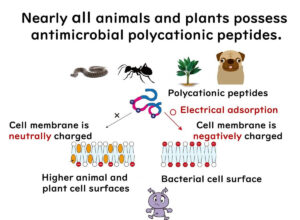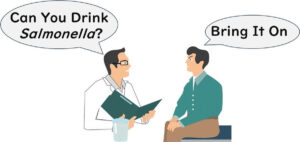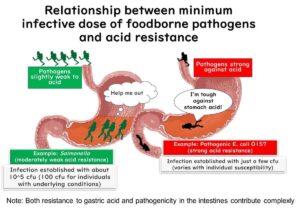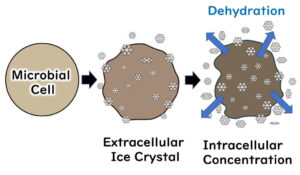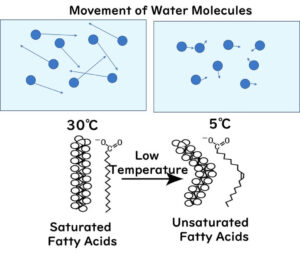From Food Preservation to Antibiotic Alternatives: The Antimicrobial Power of Polylysine and Protamine
Polylysine and protamine, polypeptides comprising 25 to 30 L-lysine and arginine amino acids respectively, are transforming the landscape of microbial inhibition. Initially researched in Japan during the late 1970s for their food preservation properties, these polycations have been pivotal in combating both Gram-negative and Gram-positive bacteria. Their profound impact extends beyond the culinary world into the medical field, where they are now being explored as promising alternatives to conventional antibiotics amidst rising antibiotic resistance.
Water Activity Explained: What is It and How Does it Differ from Water Content?
In this article, we'll dive into the intriguing world of water activity, cleverly deciphering its principles and how it differs from mere water content. We'll explore the nuances of bound and free water, the principles behind measuring water activity in food, and how reducing water activity can enhance the shelf life of preserved foods like those cured with salt. Additionally, we'll discuss the relationship between water activity and the growth of microbes such as bacteria and mold. Plus, I'll toss in some handy values of water activity to remember that could be a lifesaver—or at least a food saver! So, buckle up, and let's get our science on!
Comparative Analysis of Minimum Infectious Dose and Gastric Acid Resistance Between Salmonella and Enterohemorrhagic Escherichia coli
In this article, we'll explore the differing amounts of bacteria needed to cause food poisoning by two culprits: Salmonella and enterohemorrhagic Escherichia coli. Additionally, we'll discuss a major factor contributing to these differences: the varying resistance to stomach acid between the two.
How pH Influences Microbial Growth and Organic Acids as Antimicrobials
In this riveting exploration, we dive into how pH affects the growth and demise of microbes, using sodium acetate, propionic acid, and sorbic acid as our guides to elucidate the mechanisms of antimicrobial action of organic acids. Additionally, we discuss the crucial role of stomach acid in annihilating infectious food poisoning bacteria, highlighting its germicidal functions. Furthermore, we'll explore how variations in acid resistance among food poisoning bacteria relate to the minimum number of bacteria required to cause disease. Lastly, it's fascinating to note that food poisoning bacteria are generally vulnerable to acids, a characteristic intrinsic to their very nature as pathogens.
What Happens When Bacteria Are Frozen? Do They Die or Survive?
Explore the surprising effects of freezing on bacteria in this scientific inquiry. We examine how microorganisms from different environments respond to extreme cold, focusing on their survival, dormancy, and death mechanisms. This article highlights crucial findings relevant to food safety, revealing how common pathogens like Escherichia coli O157 react under freezing conditions. Dive into the fascinating interplay between microbiology and freezing temperatures, and discover what this means for food hygiene practices.
Microbial Growth and Temperature: Key Insights for Food Safety
Understanding how microbes interact with temperature is essential for food safety. While many foodborne pathogens, such as mesophiles, thrive at moderate temperatures, there is a common misconception that psychrophiles—microbes that adapt to cold conditions—only grow in fridge-like environments. This article demystifies the growth behaviors of these temperature-sensitive bacteria, including the versatile Listeria monocytogenes, and explores the biological adaptations that allow certain microbes to thrive in colder climates. Strengthen your knowledge of microbiological principles critical to ensuring food safety.
High-Pressure Processing (HPP) of Food: A Cutting-Edge Non-Thermal Preservation Method
High-Pressure Processing (HPP), also referred to as High Hydrostatic Pressure (HHP) or Ultra High Pressure (UHP), is a revolutionary non-thermal food preservation technology designed to inactivate foodborne pathogens and spoilage bacteria. Unlike traditional thermal processing, HPP minimizes negative effects on the taste, texture, appearance, and nutritional value of foods, making it a preferred alternative for maintaining food quality. In this article, we delve into the fundamentals of HPP, focusing on its application in microbial sterilization and its advantages over conventional sterilization methods.
The Power of Ozone Sterilization
This article summarizes the basics of ozone gas and ozone water. Ozone, a potent oxidizing agent, boasts remarkable sterilizing power. Additionally, it naturally decomposes into non-toxic oxygen, leaving no residues when used as a food sterilizer. Ozone can be utilized in two forms: as ozone gas or ozone water. Using ozone gas requires high concentrations, but it comes with several challenges, such as toxicity due to gas diffusion and the corrosive effect it has on a wide range of equipment, limiting its current applications in industry. On the other hand, ozone water, even in minimal concentrations (1-5 ppm), exhibits antimicrobial activity. The use of ozone water is not only promising for the food industry but also has broad potential applications in domestic and medical sectors.
Defeating Botulinum Spores: The Science Behind Retort Sterilization at 121.1°C
Discover the rigorous science of retort sterilization, a pivotal technique in food safety that neutralizes the formidable spores of Clostridium botulinum at 121.1°C . This article explores the 'Botulinum cook' method, a specialized heat treatment that ensures the reduction of these dangerous spores in packaged foods, allowing for safe room temperature distribution. Join us as we unravel the balance between achieving maximum sterilization efficacy and preserving the quality and flavor of food, crucial for preventing foodborne illnesses.
Food Heat Sterilization: Understanding and Applying Pasteurization, D Values, and Z Values
EHeat sterilization is a cornerstone of food safety, categorized into two key methods: pasteurization and retort sterilization. In this article, we dive into pasteurization, demystifying essential concepts like D values and Z values, and exploring their practical applications. From theory to practice, learn how these tools ensure effective and safe food sterilization.
